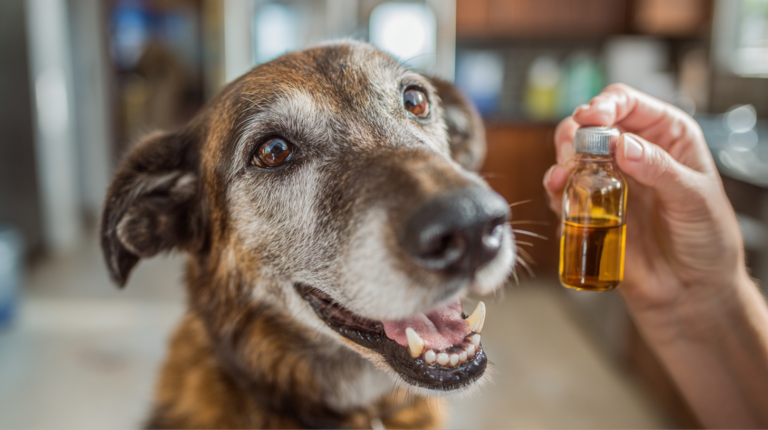Dog Food Advisor guide with 5 expert tips for choosing the best dog food. Get professional advice on ingredients, nutrition, and feeding your pet safely.
Table of Contents
Did you know that 95% of pet owners consider their dogs family members, yet only 23% consult veterinary professionals when selecting dog food? This shocking statistic reveals a critical gap in pet care knowledge that could be affecting your dog’s health, longevity, and quality of life right now.
As a dog food advisor with over a decade of experience in veterinary nutrition, I’ve witnessed countless cases where simple dietary changes transformed dogs from lethargic and unhealthy to vibrant and energetic. The food you choose for your canine companion isn’t just about filling their bowl – it’s about providing the foundation for a long, healthy, and happy life together.
Whether you’re a first-time dog owner feeling overwhelmed by the endless options in the pet food aisle, or an experienced pet parent looking to optimize your dog’s nutrition, this comprehensive dog food advisor guide will equip you with the knowledge you need to make informed decisions. We’ll explore the science behind canine nutrition, decode confusing food labels, and provide actionable strategies that you can implement immediately to improve your dog’s diet.
Understanding Your Dog’s Nutritional Needs: The Foundation of Smart Food Choices

Before diving into specific product recommendations, every responsible dog food advisor must emphasize the importance of understanding your dog’s unique nutritional requirements. Dogs are omnivores with specific dietary needs that vary based on age, size, breed, activity level, and health status.
Life Stage Considerations
Puppies require significantly more calories and nutrients per pound of body weight compared to adult dogs. Their rapidly growing bodies need higher protein levels (22-32% dry matter) and fat content (8-17% dry matter) to support proper development. Senior dogs, on the other hand, may benefit from easily digestible proteins and joint-supporting nutrients like glucosamine and chondroitin.
Adult dogs typically thrive on foods containing 18-25% protein and 5-15% fat, but these percentages can vary dramatically based on your dog’s individual needs. An active working dog will require more calories and protein than a sedentary lap dog of the same size.
Size-Specific Requirements
Small breed dogs (under 25 pounds) have faster metabolisms and may need smaller kibble sizes to prevent choking. They often require more frequent meals and calorie-dense foods. Large breed dogs (over 70 pounds) need controlled calcium and phosphorus levels during their growth phase to prevent developmental orthopedic diseases.
Expert Tip #1: Master the Art of Reading Dog Food Labels
The pet food industry generates over $50 billion annually in the United States alone, with marketing budgets designed to appeal to human emotions rather than canine nutritional needs. As your dog food advisor, I’ll teach you how to see through marketing gimmicks and focus on what truly matters.
The Ingredient List Hierarchy
Ingredients are listed by weight in descending order, but this can be misleading. A food might list “chicken” as the first ingredient, but when you combine “corn meal,” “corn gluten meal,” and “ground corn” from further down the list, corn could actually be the predominant ingredient.
Look for specific protein sources like “deboned chicken,” “salmon meal,” or “lamb meal” rather than generic terms like “meat meal” or “poultry meal.” The word “meal” indicates a concentrated protein source with moisture removed, making it more protein-dense than fresh meat.
Decoding the Guaranteed Analysis
The guaranteed analysis provides minimum percentages for protein and fat, and maximum percentages for fiber and moisture. However, these numbers don’t tell the whole story. A food with 24% protein sounds impressive, but if it’s primarily from corn gluten meal rather than animal sources, your dog won’t receive the complete amino acid profile they need.
Red Flag Ingredients to Avoid
Avoid foods containing BHA, BHT, ethoxyquin, or propyl gallate – these chemical preservatives have been linked to health concerns in long-term studies. By-products aren’t necessarily harmful, but they should be clearly identified (like “chicken by-products” rather than “poultry by-products”).
Expert Tip #2: Understand Protein Quality and Digestibility
Not all proteins are created equal, and this is where many dog owners make critical mistakes. As a dog food advisor, I’ve seen numerous cases where dogs developed coat issues, digestive problems, or energy deficiencies simply because their protein sources were poorly digestible or incomplete.
Biological Value of Proteins
Animal proteins typically have higher biological values than plant proteins for dogs. Eggs have a biological value of 100, making them an excellent protein source. Fish meal, chicken meal, and other quality animal proteins score between 75-95, while plant proteins like corn gluten meal or soy typically score 50-70.
Protein Digestibility Matters More Than Percentage
A food with 30% protein from low-quality sources may provide less usable nutrition than a food with 24% protein from high-quality sources. Look for foods that have undergone AAFCO feeding trials, which test actual digestibility rather than just laboratory analysis.
Expert Tip #3: Navigate the Grain-Free Debate with Science-Based Information
The grain-free trend has dominated pet food marketing for the past decade, but recent FDA investigations into potential links between grain-free diets and dilated cardiomyopathy (DCM) in dogs have created confusion among pet owners. As your dog food advisor, I’ll help you separate fact from fiction.
Understanding the DCM Connection
The FDA’s investigation found that many dogs diagnosed with DCM were eating diets containing high levels of peas, lentils, other legumes, or potatoes as main ingredients. The theory is that these ingredients may interfere with taurine absorption or metabolism, though the exact mechanism remains unclear.
When Grain-Free Makes Sense
Some dogs do have genuine grain allergies or sensitivities, though these are relatively rare. True food allergies in dogs most commonly involve proteins (beef, chicken, dairy, eggs) rather than grains. If your dog has been diagnosed with a grain allergy through proper veterinary testing, grain-free foods may be necessary.
The Healthiest Approach
Focus on foods with whole grains like brown rice, oats, or quinoa rather than grain fragments or by-products. These provide valuable nutrients and fiber while being generally well-tolerated by most dogs.
Expert Tip #4: Recognize When to Consult Veterinary Professionals
While general dog food advisor guidelines can help most pet owners, certain situations require professional veterinary guidance. Recognizing these situations can prevent serious health complications and ensure your dog receives optimal nutrition.
Health Conditions Requiring Specialized Diets
Dogs with kidney disease, liver problems, diabetes, or heart conditions may require prescription diets formulated specifically for their conditions. These therapeutic diets are available only through veterinarians and are formulated to support medical treatment.
Life Stage Transitions
Switching from puppy to adult food, or from adult to senior food, should be done gradually and may benefit from professional guidance. Pregnant and nursing dogs have dramatically different nutritional needs that may require specialized formulations.
Unexplained Health Issues
If your dog experiences chronic digestive issues, skin problems, or energy changes after switching foods, consult your veterinarian before trying multiple different diets. These symptoms could indicate underlying health problems that require medical attention.
Expert Tip #5: Implement Safe Food Transition Strategies
Even the highest-quality dog food can cause digestive upset if introduced too quickly. Proper food transition techniques are crucial for maintaining your dog’s digestive health and ensuring they accept their new diet.
The 7-Day Transition Method
Week timeline for safe food transitions:
- Days 1-2: 75% old food, 25% new food
- Days 3-4: 50% old food, 50% new food
- Days 5-6: 25% old food, 75% new food
- Day 7: 100% new food
Monitoring During Transitions
Watch for signs of digestive upset including loose stools, vomiting, decreased appetite, or unusual behavior. If these symptoms occur, slow down the transition process or consult your veterinarian.
Special Considerations for Sensitive Dogs
Dogs with sensitive stomachs may require a 10-14 day transition period. Some dogs benefit from probiotics during food transitions to support digestive health.
Common Dog Food Mistakes That Could Harm Your Pet
Through my experience as a dog food advisor, I’ve identified several recurring mistakes that well-intentioned pet owners make when selecting and feeding their dogs.
Mistake #1: Choosing Based on Human Food Trends
Many pet owners apply human nutrition trends to their dogs without considering species-specific needs. Dogs don’t require organic, non-GMO, or gluten-free foods unless they have specific medical conditions requiring these restrictions.
Mistake #2: Frequent Diet Changes
Constantly switching foods based on sales or new products can disrupt your dog’s digestive system and make it difficult to identify the source of any health issues that arise.
Mistake #3: Ignoring Portion Control
Even the highest-quality dog food can contribute to obesity if overfed. Follow feeding guidelines on the package as a starting point, but adjust based on your dog’s body condition and activity level.
Mistake #4: Supplementing Without Professional Guidance
Adding vitamins, minerals, or other supplements to complete and balanced dog foods can create dangerous imbalances. Most commercial dog foods are formulated to provide complete nutrition without additional supplementation.
Warning Signs: When Your Dog’s Food Isn’t Working
Recognizing the signs that your current dog food isn’t meeting your pet’s needs is crucial for maintaining their health and well-being.
Digestive Issues
Chronic loose stools, constipation, excessive gas, or vomiting after meals may indicate food intolerance or poor digestibility. These symptoms warrant a consultation with your veterinarian and possible dietary adjustment.
Skin and Coat Problems
Dull, brittle fur, excessive shedding, or skin irritation can sometimes be traced to nutritional deficiencies or food allergies. However, these symptoms can also indicate underlying health conditions requiring veterinary attention.
Energy and Behavioral Changes
Sudden lethargy, hyperactivity, or behavioral changes after switching foods may indicate that the new diet isn’t providing appropriate nutrition for your dog’s needs.
Weight Changes
Unexplained weight loss or gain despite consistent feeding practices may indicate that your dog’s current food isn’t meeting their metabolic needs.
Step-by-Step Guide to Choosing the Right Dog Food
Follow this systematic approach when selecting new dog food for your pet:
Step 1: Assess Your Dog’s Individual Needs
Consider your dog’s age, size, activity level, and any health conditions. Puppies, adults, and seniors have different nutritional requirements that must be met through appropriate food selection.
Step 2: Set Your Budget
Quality dog food is an investment in your pet’s health, but expensive doesn’t always mean better. Determine a realistic budget and look for the best value within your price range.
Step 3: Research Brands and Products
Look for companies with strong quality control measures, transparent ingredient sourcing, and good customer service records. Check for any recent recalls or FDA warnings.
Step 4: Read Labels Carefully
Apply the label-reading skills outlined in Expert Tip #1 to evaluate potential foods. Focus on ingredient quality rather than marketing claims.
Step 5: Consider Your Dog’s Preferences
Even nutritionally perfect food won’t benefit your dog if they refuse to eat it. Consider your dog’s texture preferences and any previous food experiences.
Step 6: Plan the Transition
Purchase a small bag initially to test your dog’s acceptance before committing to larger quantities. Plan for a gradual transition using the method outlined in Expert Tip #5.
Myth-Busting: Separating Fact from Fiction in Dog Nutrition
The pet food industry is rife with myths and misconceptions that can lead pet owners astray. Let’s address some of the most persistent myths with science-based facts.
Myth #1: Dogs Should Eat Like Wolves
While dogs are descended from wolves, thousands of years of domestication have changed their digestive capabilities. Modern dogs can digest starches more efficiently than wolves and have adapted to omnivorous diets.
Myth #2: Raw Diets Are Always Superior
Raw diets can provide excellent nutrition when properly formulated and handled, but they also carry risks of bacterial contamination and nutritional imbalances. Commercial raw diets undergo safety testing that home-prepared raw diets may lack.
Myth #3: Expensive Food Is Always Better
Price doesn’t always correlate with nutritional quality. Some premium foods are expensive due to marketing costs rather than superior ingredients. Focus on nutritional value rather than price alone.
The Role of Treats and Supplements in Your Dog’s Diet
Treats and supplements can play important roles in your dog’s overall nutrition plan, but they should complement, not replace, a balanced diet.
Treating Responsibly
Treats should comprise no more than 10% of your dog’s daily caloric intake. Choose treats made with quality ingredients and avoid those containing artificial colors, excessive salt, or harmful preservatives.
Supplement Considerations
Most dogs eating complete and balanced commercial diets don’t require additional supplements. However, some dogs may benefit from omega-3 fatty acids, probiotics, or joint supplements under veterinary guidance.
Special Dietary Considerations for Different Life Stages
Understanding how your dog’s nutritional needs change throughout their life helps ensure they receive appropriate nutrition at every stage.
Puppy Nutrition (0-12 months)
Puppies require more calories, protein, and fat than adult dogs to support their rapid growth. Large breed puppies need specially formulated foods to prevent developmental orthopedic diseases.
Adult Dog Nutrition (1-7 years)
Adult dogs thrive on maintenance diets that provide steady energy without excess calories. This is typically the longest life stage and the easiest to manage nutritionally.
Senior Dog Nutrition (7+ years)
Senior dogs may benefit from easily digestible proteins, joint-supporting nutrients, and adjusted calorie levels to prevent age-related weight gain. Regular veterinary monitoring becomes increasingly important.
Making the Switch: Implementation Strategies for Success
Successfully implementing dietary changes requires patience, consistency, and careful monitoring. Here’s how to ensure your dog’s transition to better nutrition goes smoothly.
Creating a Feeding Schedule
Consistent meal times help regulate your dog’s digestive system and make it easier to monitor their appetite and elimination patterns. Most adult dogs do well with two meals per day.
Measuring Portions Accurately
Use a kitchen scale or measuring cups to ensure accurate portion sizes. Eyeballing portions often leads to overfeeding and weight gain.
Monitoring Progress
Keep a simple log of your dog’s weight, energy levels, and any changes in appetite or elimination patterns. This information can be valuable for veterinary consultations.
Educational Table:
Markdown Version:
| Life Stage | Protein (%) | Fat (%) | Key Nutrients | Feeding Frequency |
|---|---|---|---|---|
| Puppy (0-12 months) | 22-32% | 8-17% | DHA, Calcium, Phosphorus | 3-4 times daily |
| Adult (1-7 years) | 18-25% | 5-15% | Balanced amino acids, Omega-3 | 2 times daily |
| Senior (7+ years) | 16-23% | 5-12% | Glucosamine, Antioxidants | 2 times daily |
| Active/Working | 25-32% | 12-20% | Higher calories, B-vitamins | 2-3 times daily |
| Overweight Dogs | 20-28% | 6-10% | L-carnitine, Fiber | 2-3 times daily |
FAQ Section :
Q: How do I know if my dog food advisor recommendations are working for my specific dog?
A: Monitor your dog’s energy levels, coat condition, digestive health, and weight. Positive changes typically appear within 4-6 weeks of switching to appropriate food. If you notice improvements in these areas, your dog food advisor guidance is working effectively.
Q: What should I do if my dog refuses to eat the new food recommended by my dog food advisor?
A: Try a slower transition period (10-14 days instead of 7), mix in small amounts of healthy flavor enhancers like bone broth, or consider a different protein source. Some dogs are simply picky eaters and may need time to adjust.
Q: Are grain-free dog foods always better according to dog food advisor experts?
A: No, grain-free isn’t automatically better. Unless your dog has a diagnosed grain allergy, whole grains provide valuable nutrients. Recent FDA investigations suggest some grain-free diets may be linked to heart problems in certain dogs.
Q: How often should I reassess my dog’s food based on dog food advisor principles?
A: Evaluate your dog’s diet every 6-12 months, or whenever there are changes in age, activity level, or health status. Senior dogs may need more frequent dietary assessments as their needs change.
Q: When should I consult a veterinarian instead of relying on general dog food advisor tips?
A: Consult a veterinarian if your dog has health conditions, shows signs of food allergies, experiences digestive issues lasting more than a few days, or needs prescription diets for medical management.
Q: Can I trust dog food advisor recommendations for all breeds and sizes?
A: While basic principles apply to all dogs, different breeds and sizes have specific needs. Large breed puppies need different nutrition than small breed puppies, and working dogs have different requirements than companion dogs.
Q: What’s the most important factor a dog food advisor considers when selecting food?
A: The most important factor is matching the food to your individual dog’s needs based on age, size, activity level, and health status, rather than following trends or choosing based on marketing claims.
For more expert pet care tips and product recommendations, visit BlithePet.com your trusted source for pet wellness.
Conclusion
Choosing the right food for your dog doesn’t have to be overwhelming when you have the right information and guidance. By understanding your dog’s individual needs, learning to read labels effectively, and implementing safe transition strategies, you can provide your furry friend with the nutrition they need to thrive.
Remember that every dog is unique, and what works for one may not work for another. Stay observant, be patient during transitions, and don’t hesitate to consult with veterinary professionals when you have concerns about your dog’s nutrition or health.
The investment you make in quality nutrition today will pay dividends in your dog’s health, energy, and longevity for years to come. Your dog depends on you to make these important decisions – armed with this knowledge, you’re well-equipped to be the best dog food advisor your pet could ask for.
Have a similar experience with your pet? Share it in the comments below! Don’t forget to check out our other helpful guides at BlithePet.com for more expert advice on keeping your furry family members happy and healthy.







